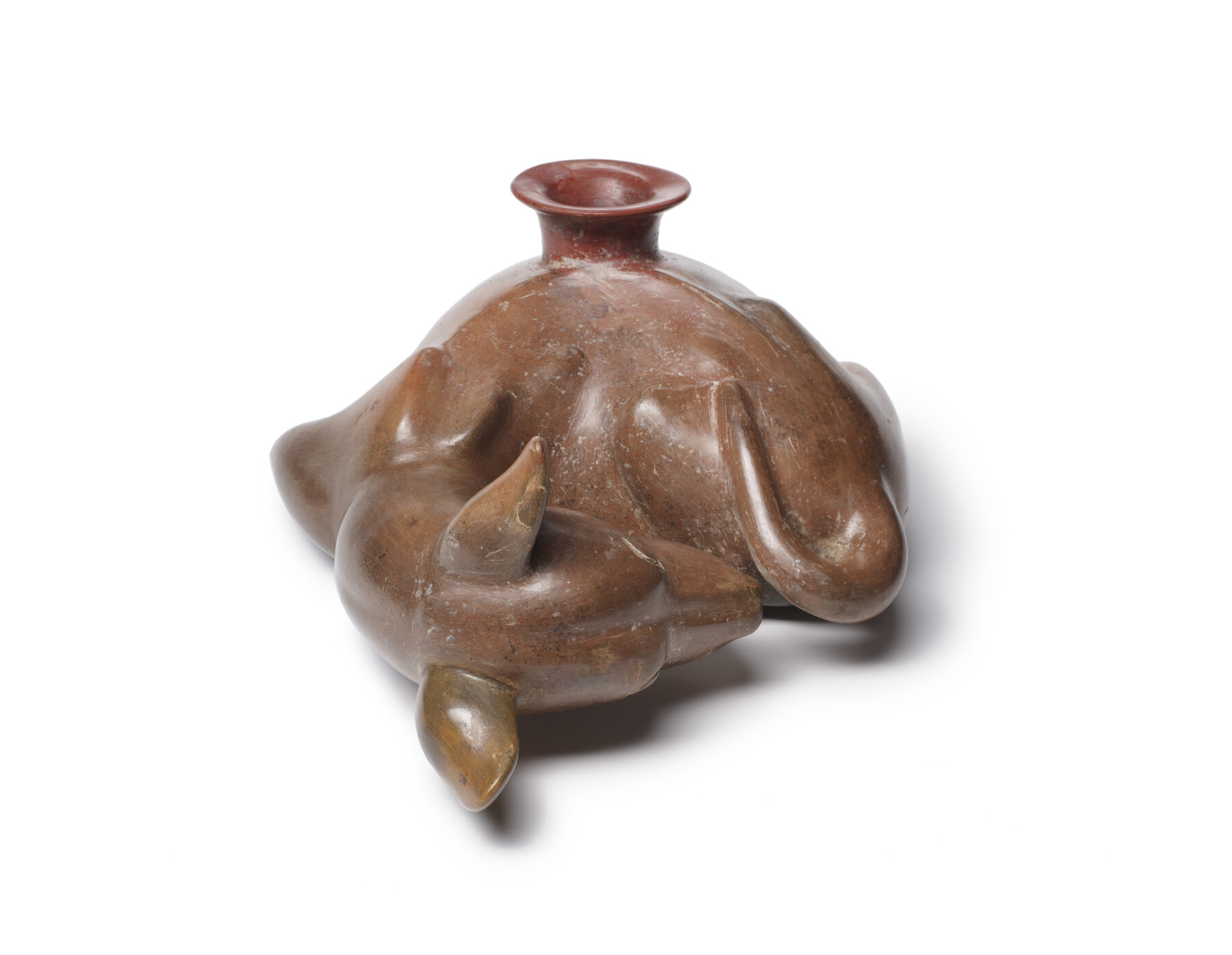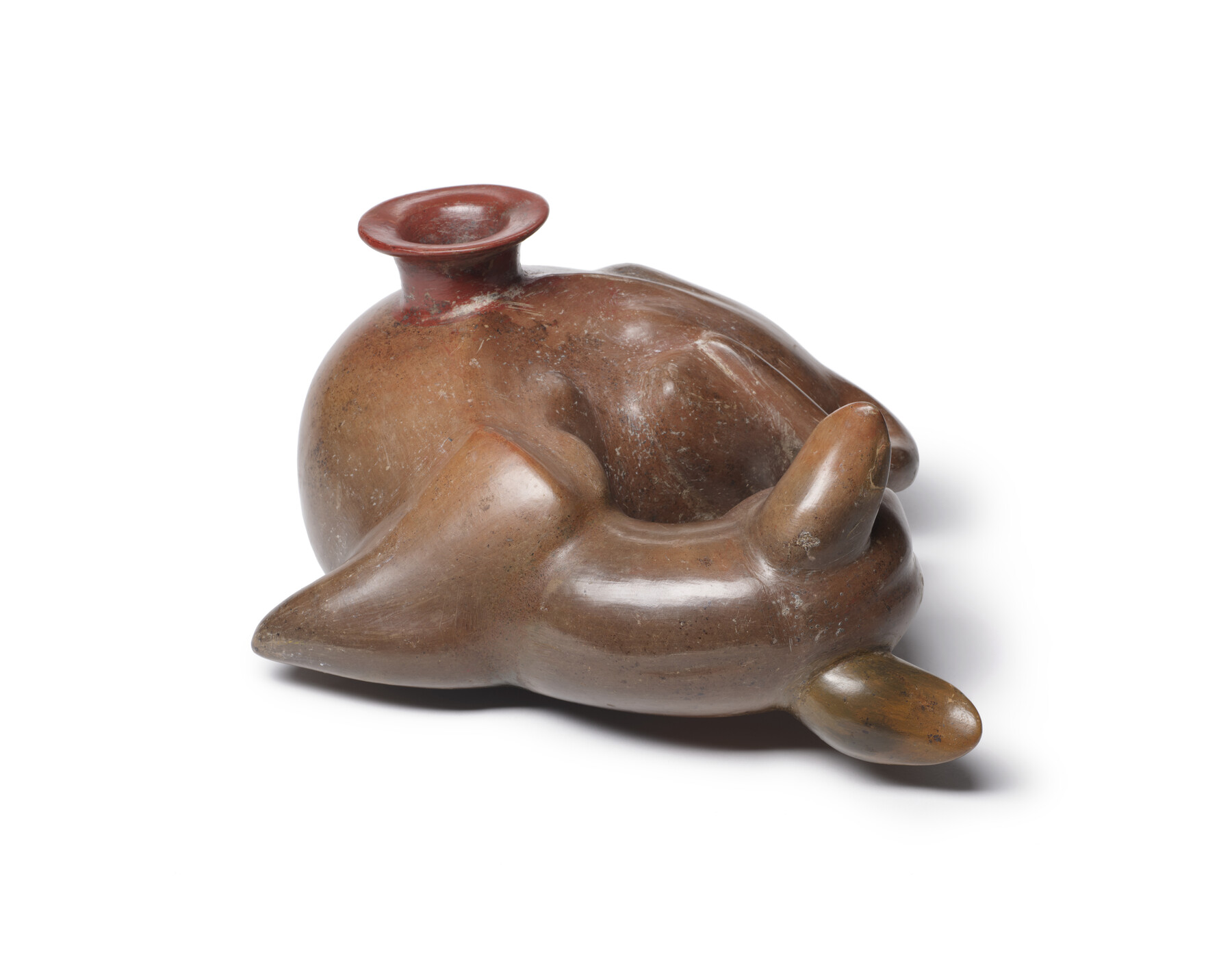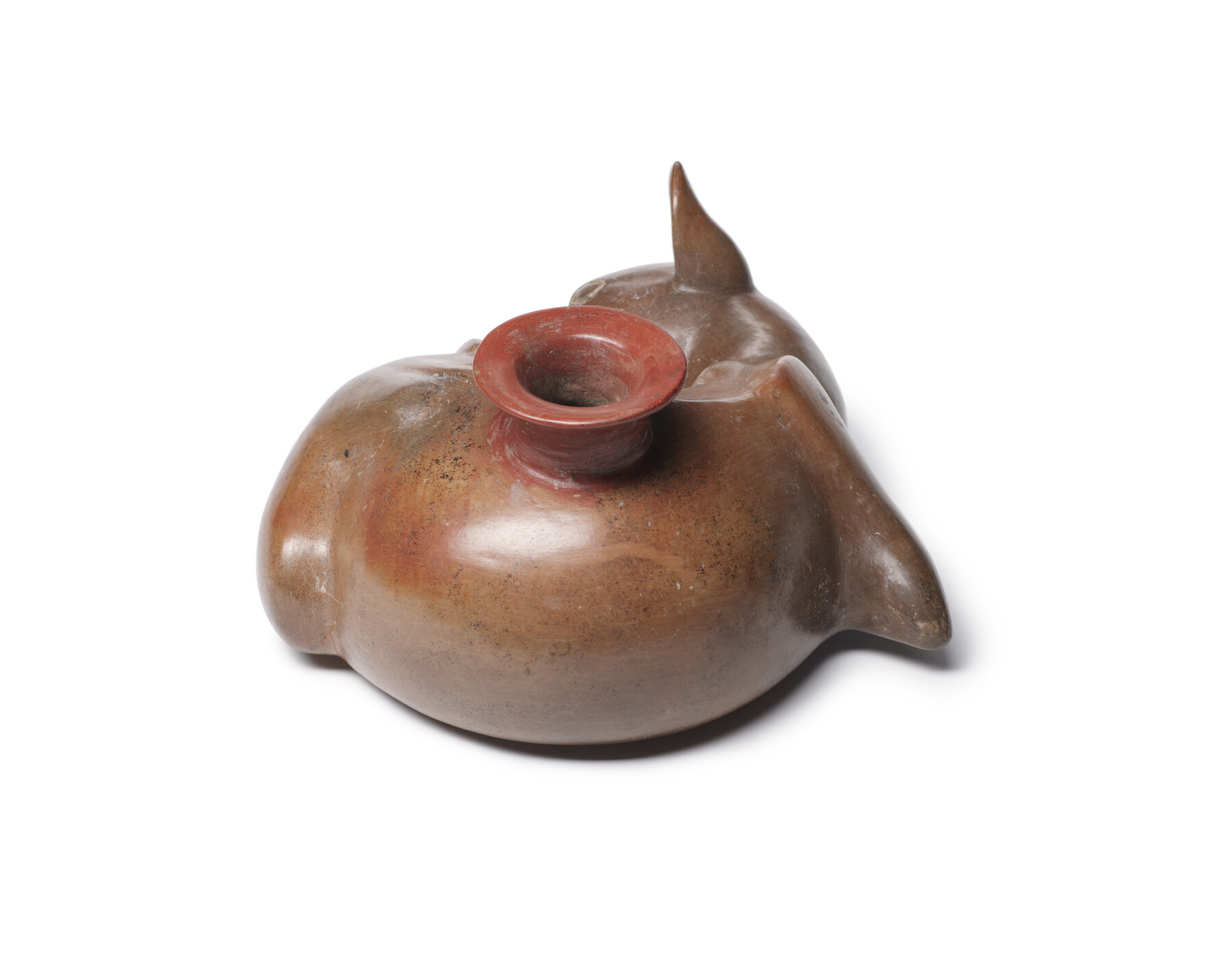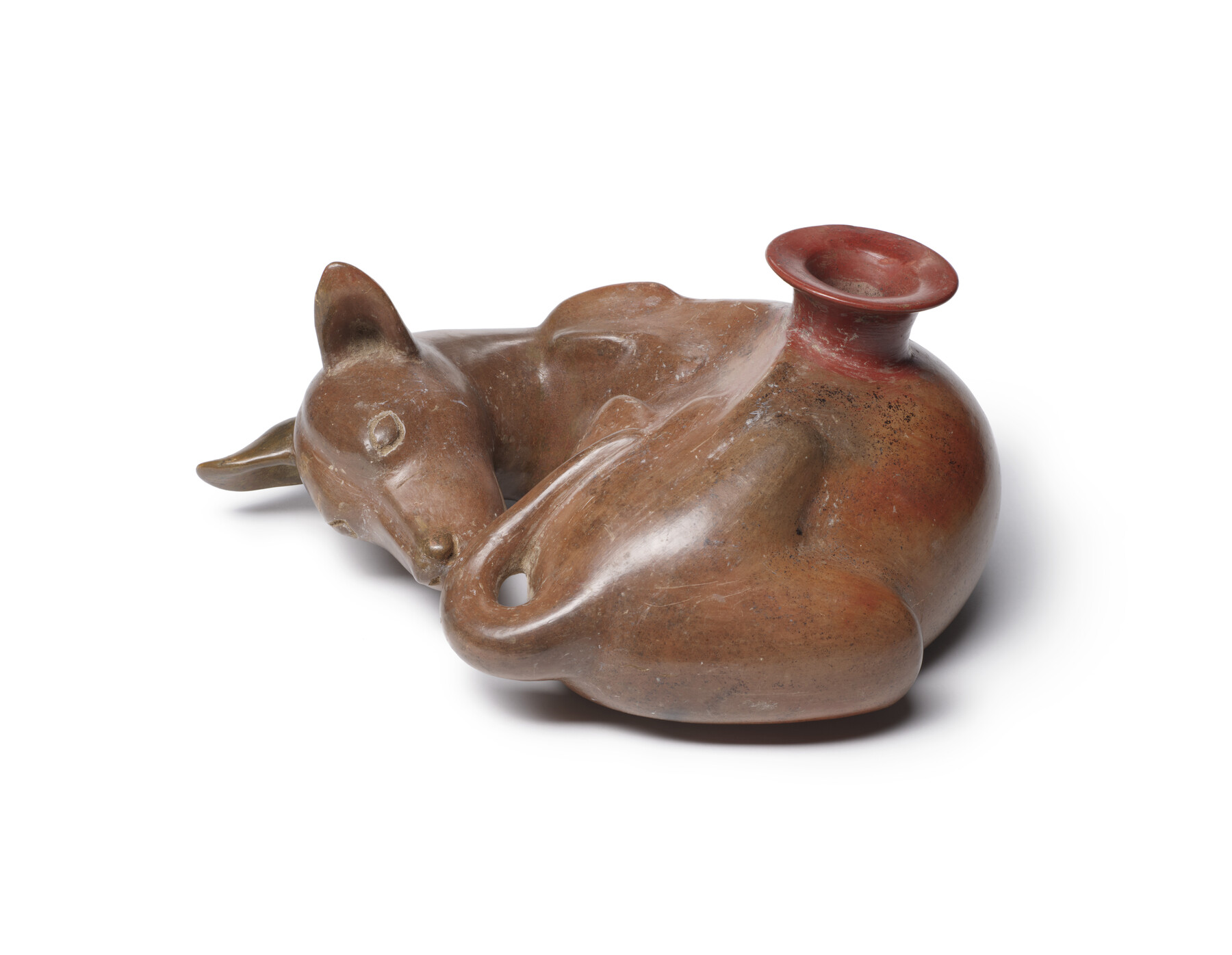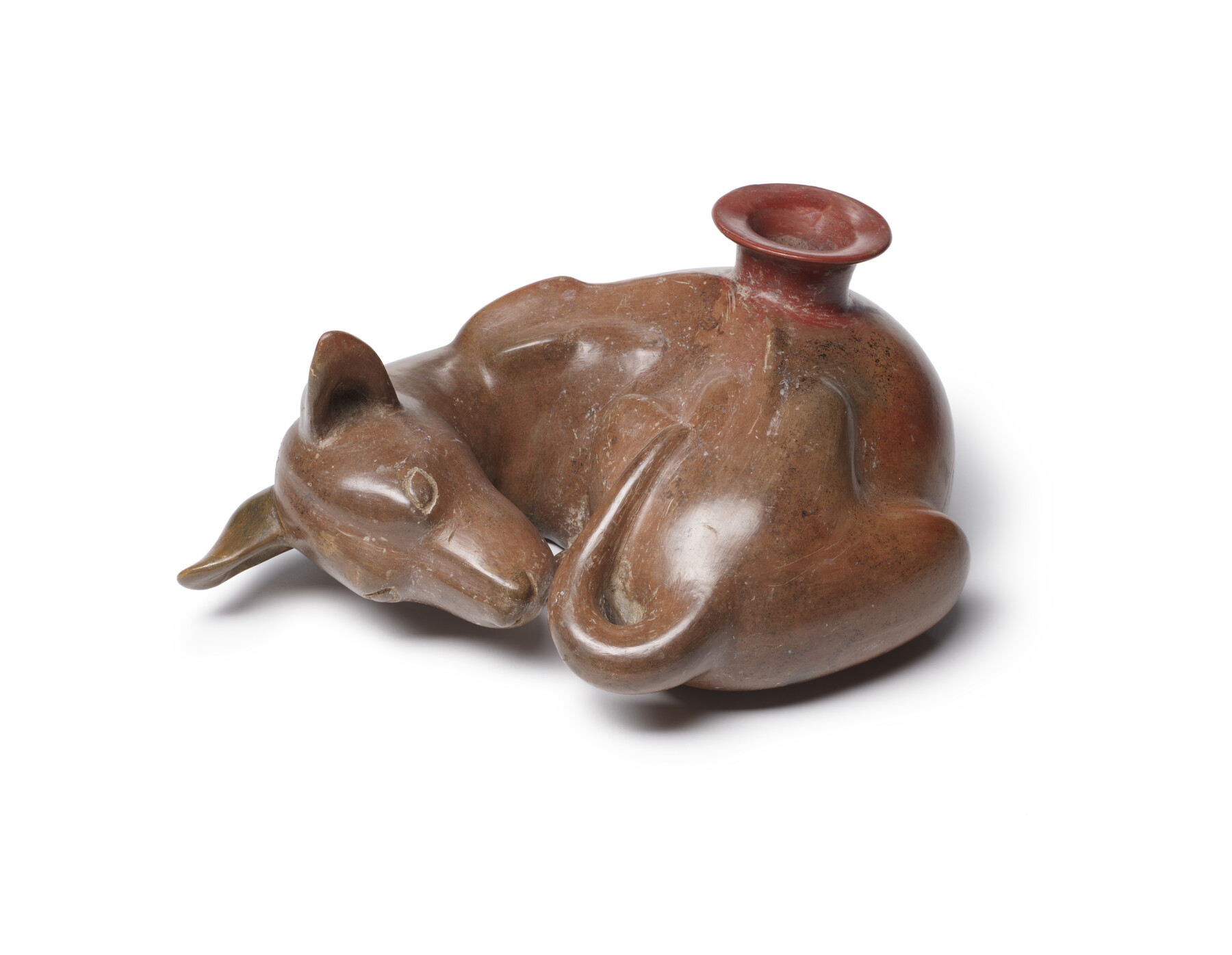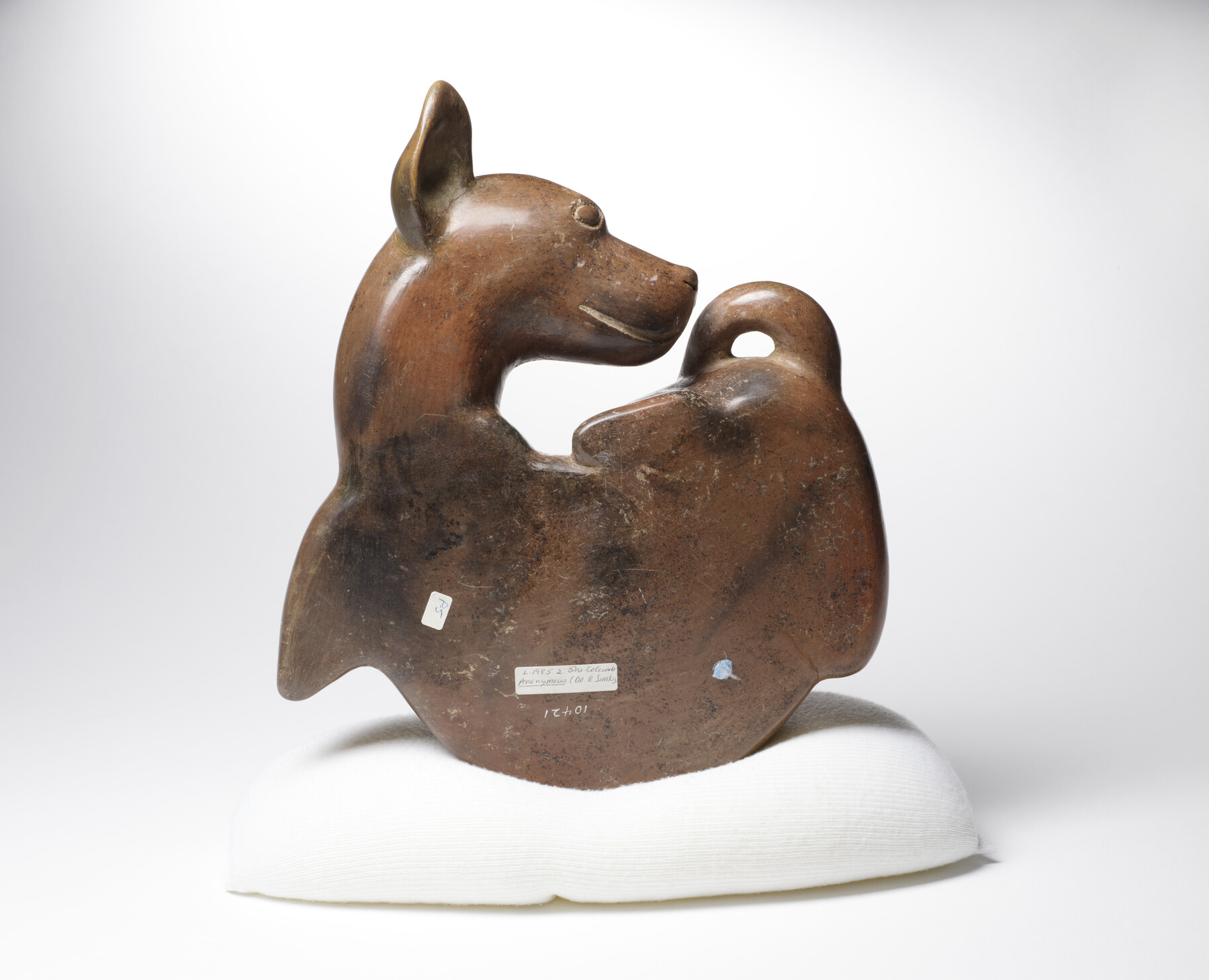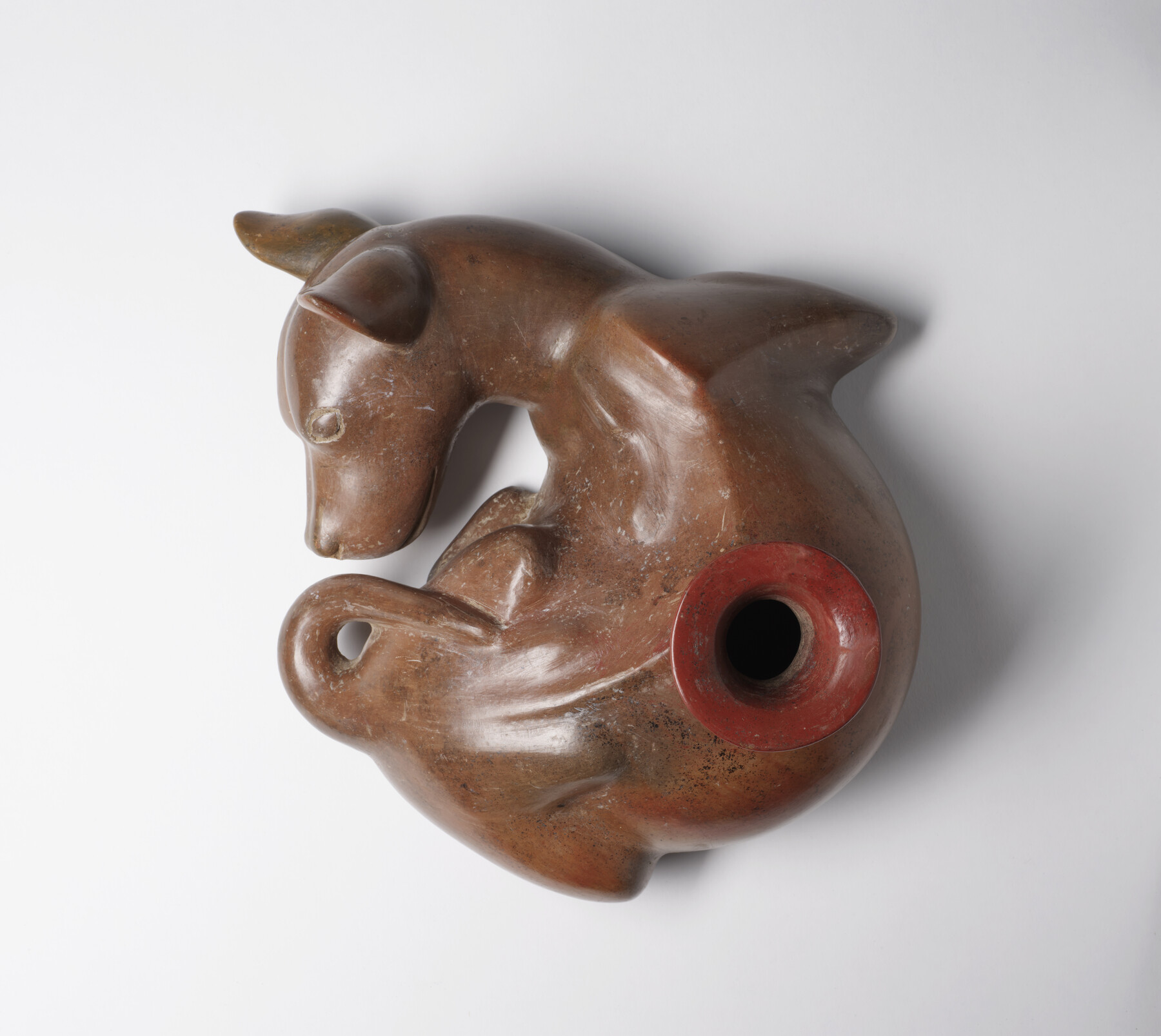Dog Effigy Vessel
(Ancient Americas )
Among many peoples of ancient Mexico, there were myths that a red or yellow dog was the companion that would help a deceased person across a river they needed to cross in the Underworld. It was said that a white dog would not want to dirty itself, and a black dog had already made the trip and was tired. Therefore, it was important to be kind to these reddish dogs in life, and to seek them out in the Underworld. Perhaps for this reason, hundreds of ceramic figures of red dogs have been found in tombs and homes of ancient West Mexico. They were carefully modeled, many of them showing a slightly skeletal dog, as in this example, with prominent backbone, and carefully painted and polished.
Provenance
Provenance (from the French provenir, 'to come from/forth') is the chronology of the ownership, custody, or location of a historical object. Learn more about provenance at the Walters.
David Stuart Gallelries [date and mode of acquisition unknown]; John G. Bourne, 1980s, by purchase; Walters Art Museum, 2009, by gift.
Exhibitions
| 2012-2013 | Exploring Art of the Ancient Americas: The John Bourne Collection Gift. The Walters Art Museum, Baltimore; Frist Center for the Visual Arts, Nashville. |
| 1998-2008 | Art of Ancient America, 1500 B.C.-1400 A.D.. Museum of New Mexico, Santa Fe. |
Geographies
Mexico, Colima (Place of Origin)
Measurements
H: 5 5/8 x L: 12 3/16 x W: 10 15/16 in. (14.3 x 30.9 x 27.8 cm)
Credit Line
Gift of John Bourne, 2009
Location in Museum
Not on view
Accession Number
In libraries, galleries, museums, and archives, an accession number is a unique identifier assigned to each object in the collection.
In libraries, galleries, museums, and archives, an accession number is a unique identifier assigned to each object in the collection.
2009.20.63



